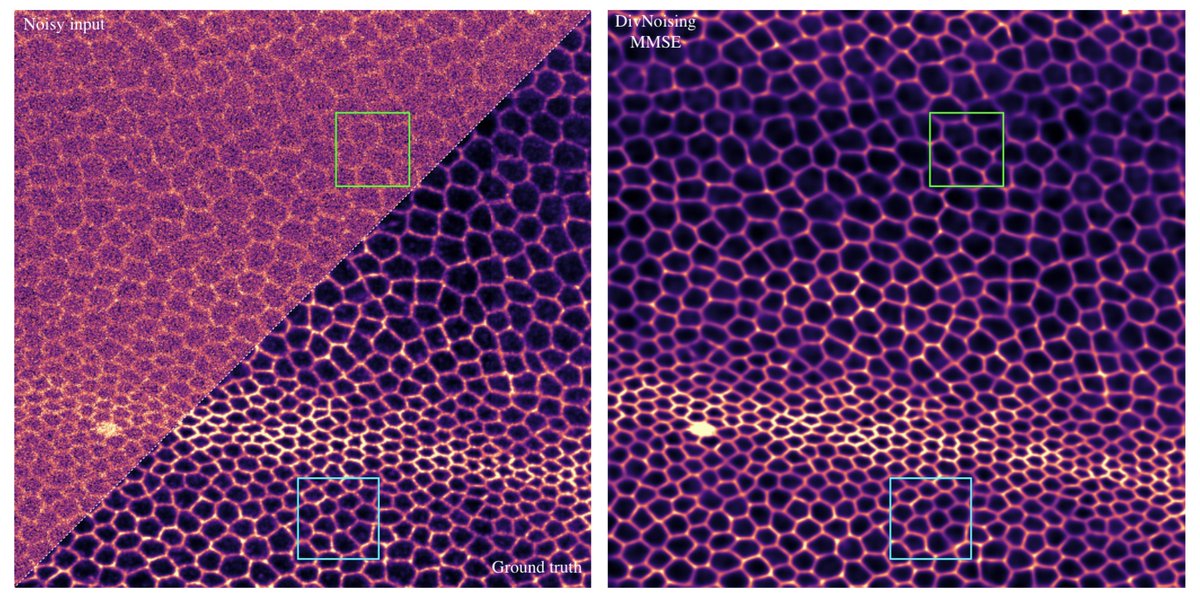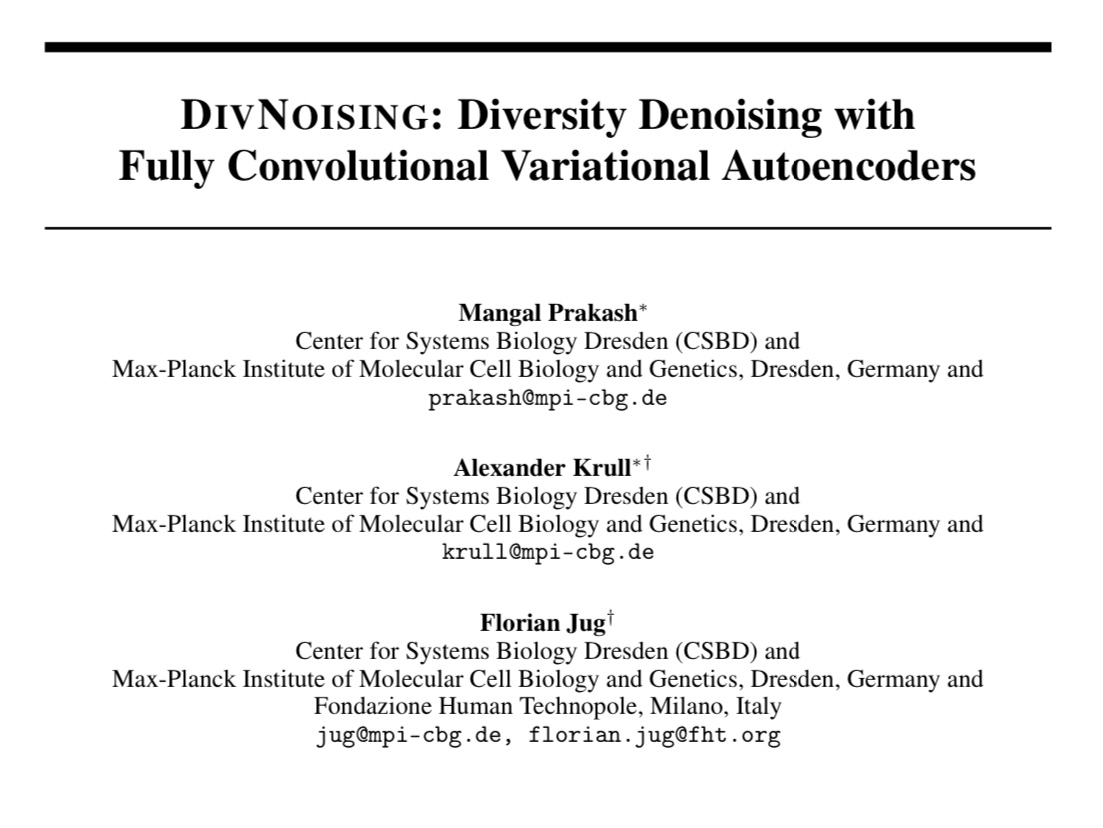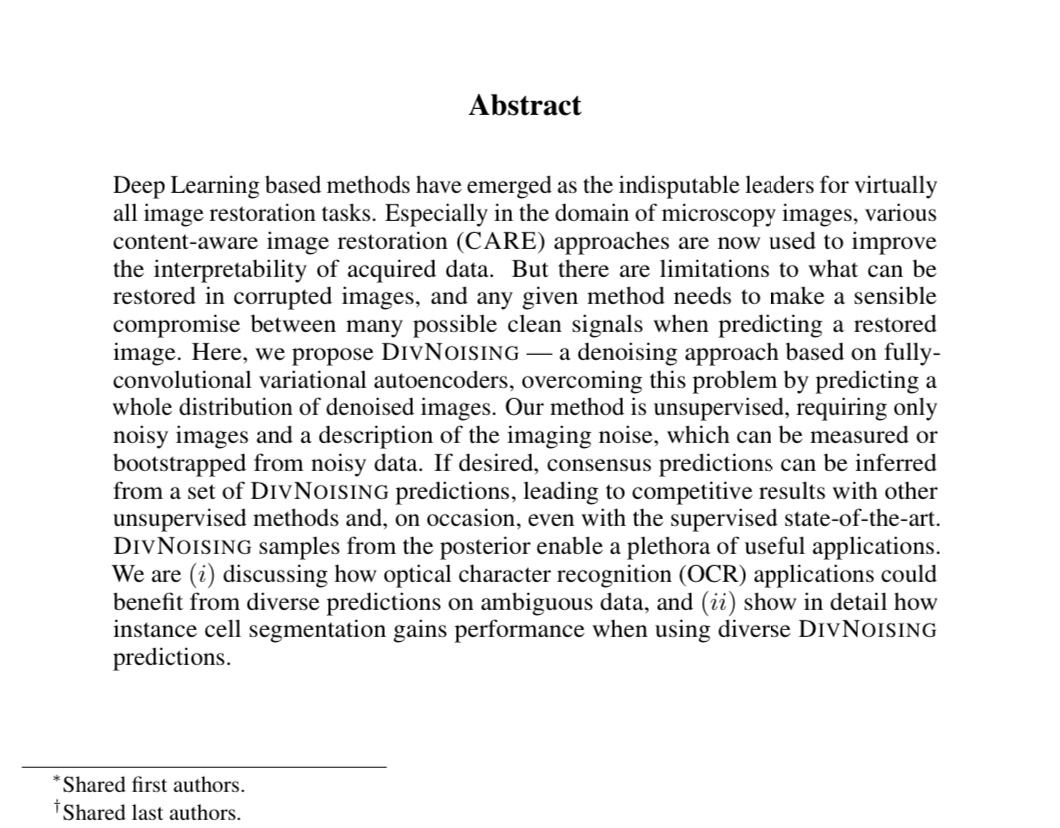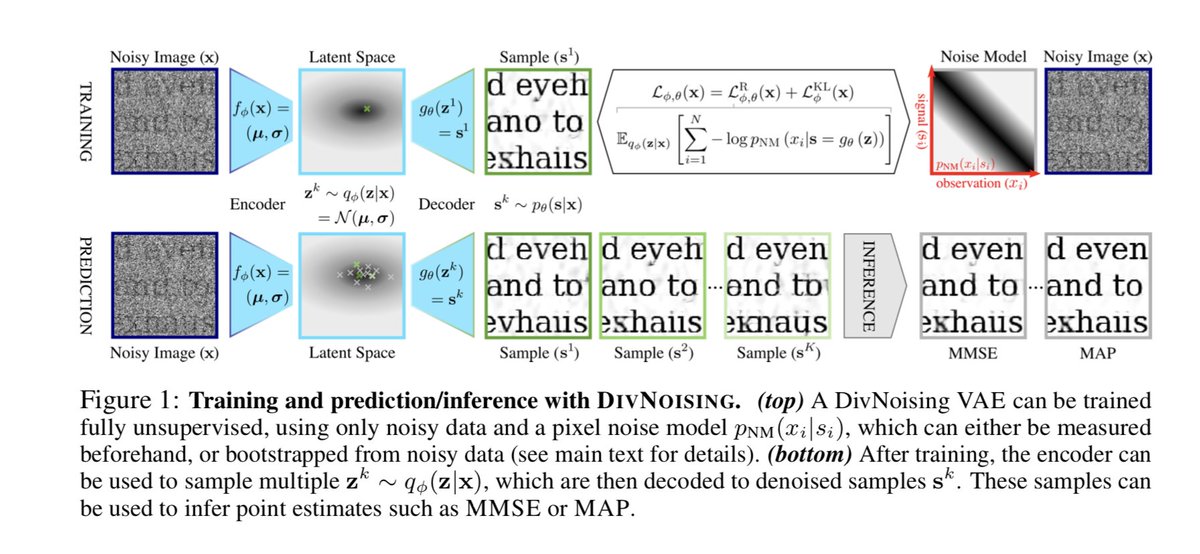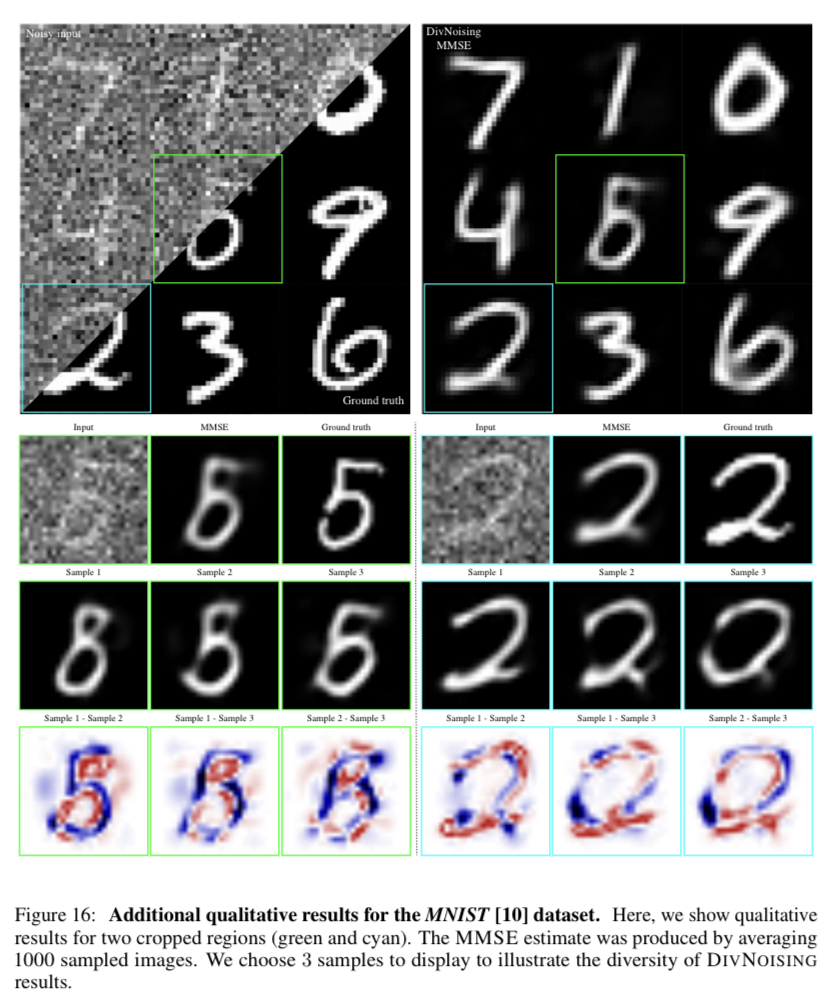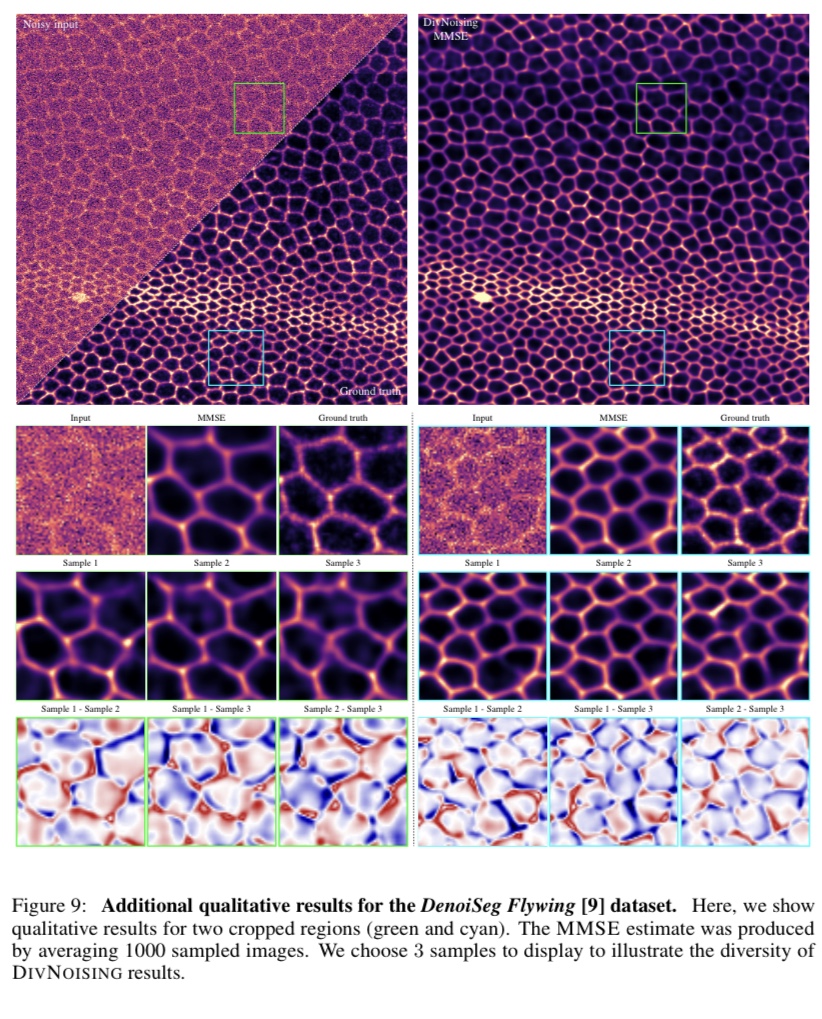
🚨 ICLR SPOTLIGHT 🚨
Unsupervised denoising, i.e. removing noise in data without having ground truth, has a new state-of-the-art. A short 🧵 about why this rocks...
openreview.net/forum?id=DfMql…
Spoiler: it can also remove structured noise & gives diverse solutions for ambiguous data
Unsupervised denoising, i.e. removing noise in data without having ground truth, has a new state-of-the-art. A short 🧵 about why this rocks...
openreview.net/forum?id=DfMql…
Spoiler: it can also remove structured noise & gives diverse solutions for ambiguous data

Our method, called HDN, employs a hierarchical VAE to learn a latent representation of structures occuring in a noisy body of data. Hence, we can later use the model to sample a space of sensible ‘data interpretations’. 

Without any further tricks this leads to SOTA results for removing pixel noises!
(And the sampling discussed above is a super useful bonus feature other methods typically can't offer...)
(And the sampling discussed above is a super useful bonus feature other methods typically can't offer...)

But how would HDN know what structured noises to remove? How should it know that these are not structures we care about (i.e. data)??? #deep #philosophical
Annoying structured noises in microscopy often show correlation with sharp gradients within a narrow pixel neighborhood, while real structures are smoothed by the PSF. This allows us to distinguish them and the hierarchical nature of our network supports this very naturally... 

Now... since we know how to interpret this, we can simply reconstruct denoised “interpretations” neglecting the lowest layer(s)... #tadaaa
It's cool because its simple!
Code is open github.com/juglab/HDN
And we're working on user-friendly ways to use it! BioImage.io
It's cool because its simple!
Code is open github.com/juglab/HDN
And we're working on user-friendly ways to use it! BioImage.io
Last but not least, let me thank the team...
The relentless and heroic work by @Mangal_Prakash_ cannot be overrated, but all the ideas, discussions, inputs, and positive interaction with @2ptmvd and @docmilanfar have been key for this work to now exist.
The relentless and heroic work by @Mangal_Prakash_ cannot be overrated, but all the ideas, discussions, inputs, and positive interaction with @2ptmvd and @docmilanfar have been key for this work to now exist.
So... se y’all at ICLR... come and see our Spotlight if this all sounds interesting to you!
PS: camera ready version on @OpenReviews and updated arXiv version will follow shortly...
PS: camera ready version on @OpenReviews and updated arXiv version will follow shortly...
• • •
Missing some Tweet in this thread? You can try to
force a refresh


